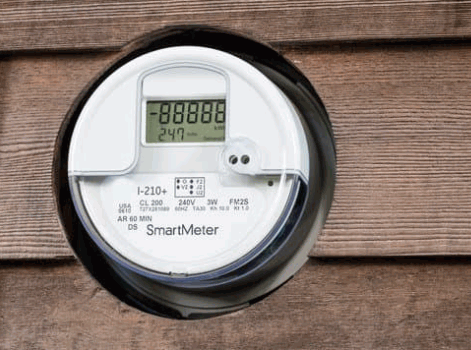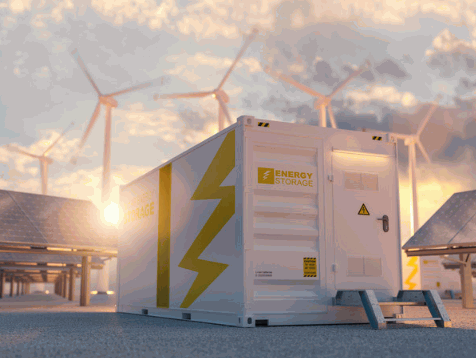At Skylamp Solar, we are passionate about the benefits of renewable electricity. What many people don't realise, however, is that you can actually get paid for the energy that you create using a solar PV system.
The Smart Export Guarantee is a great choice for any small-scale generators to truly get the most out of their renewable energy system. But what exactly is it? Let's take a look at the details.
The Smart Export Guarantee (SEG) is a government initiative aimed at compensating small-scale generators for the energy that they don't use.
Whatever surplus energy that you have generated but haven't used gets exported back into the energy grid and it is this exported electricity that you will get paid for.
The scheme is only available in England, Scotland, and Wales (not Northern Ireland). It replaces the Feed-In-Tariff (FIT) that closed to new customers in April 2019.
Not everyone who generates renewable electricity is eligible to be put on an SEG tariff. Certain criteria need to be met.
To be eligible for the Smart Export Guarantee tariff, you need to be generating electricity using one of the following methods:
You also have to be a small-scale generator so you need to generate electricity within the required limits. These are up to 50kW for micro-CHP and up to 5MW for solar PV panels, hydro, anaerobic digestion, and wind turbines.
You can be generating electricity for either home or business use as long as the amount you export doesn't go above the limits. For larger-scale generators, there may be other schemes that you can sign up for.
You will need a microgeneration/MCS certificate to show the energy supplier who is providing you with the SEG tariff. The Microgeneration Certification Scheme (MCS) aims to provide contractors with proof that the quality of their smart energy technologies is high.
If you have solar panels, this isn't something that you'll usually need to worry about as most solar panel installers will come under the MCS certification scheme. With other types of renewable electricity systems, you may need to have them certified independently.
To be eligible for an SEG tariff, you will need to have a smart meter installed that is capable of sending data about the electricity exported in half-hourly readings. You don't necessarily need a separate export meter. Many smart meters can record both import and export meter readings.
Technically, the government is clear that you don't have to have a smart meter to benefit from an SEG tariff, but in reality, it will almost certainly need to be a smart meter for you to meet the eligibility criteria.
This is because non-smart meters are almost never capable of sending readings in half-hourly intervals.

There is a range of incentives available to encourage people to generate their own green electricity. You can still be eligible for SEG tariffs while also benefiting from most of these, which is great! The only exception is the Feed-In-Tariff (FIT scheme).
Because the Smart Export Guarantee is designed to replace Feed-In-Tariff, you won't be eligible for SEG payments if you are currently receiving FIT payments.
If you have battery storage for your solar panels, you won't receive SEG payments for the electricity stored in your batteries. You will only get paid for the electricity exported to the grid.
Some energy companies provide specific battery export tariffs that can be quite generous, and these use the electricity in your batteries to balance the National Grid when needed.
Things get a bit more complicated if your battery stores energy that is taken from the grid. This is referred to as "brown electricity" which is different from the "green electricity" you have generated with your renewable energy technology.
It isn't mandatory for energy companies to pay for brown electricity, and many don't. There are, however, ways to demonstrate that your brown and green electricity is separated. Your energy company will be able to give you more information on this.

According to the Smart Export Guarantee, large energy companies with 150,000 or more customers have to provide Smart Export Guarantee tariffs. Some smaller energy companies also provide SEG tariffs on a voluntary basis.
To sign up for an export tariff, you will need to approach the company directly. As long as they are an SEG licensee, they will be able to provide you with an SEG tariff.
It is well worth doing your research before choosing your SEG tariff company because tariff rates can vary wildly. There is no minimum export tariff set by the government (although it can never be zero) so you really can see big differences between companies.
It is also worth regularly checking the tariff prices to see if you can get a better deal by switching as they change over time.
SEG tariff rates can be variable or fixed. If it's fixed, the price you're quoted for your exported electricity will remain the same for the duration of your contract. If it is a variable rate, then the price will fluctuate depending on the market value of the electricity.
Which one of these would be better depends on what you want. A fixed-rate tariff gives you stability and a guarantee that the price won't dip too low whereas a variable rate does have some risk but it also gives you the chance of a higher price.
One of the benefits of the SEG tariff is that you don't have to use the same company that provides you with your energy. You can apply for your export tariff from any of the energy companies that offer them while keeping your energy supplier the same.
So if you do decide to switch regularly to get a better price for your export electricity, you don't have to worry about the hassle of switching energy providers.
If you joined the FIT scheme before it ended then you will be able to stay on it for the duration of your contract, and you probably should because the FIT scheme is a lot more generous in its export payments than the SEG scheme that replaced it.
Under the fit scheme, you would receive payments based on both your generated electricity and your exported electricity. The generated electricity is calculated using a meter but the exported electricity was estimated as 50% of the amount you generated.
Whereas under the SEG scheme, you aren't paid for your generated electricity at all and you are paid depending on how much electricity you export.
This doesn't mean that the SEG scheme is worthless. One of the benefits is the different export tariffs. There was one single tariff set by Ofgem for FIT but under SEG, each different supplier can set their own SEG tariffs (including variable tariffs).
While this can sometimes mean that you might get less per unit in export payments, it does allow you to shop around and get a much better price.
Only bigger companies with 150,000 or more customers are obligated by the government to be SEG licensees. This will definitely at least include the "big six" energy suppliers:
Many smaller energy companies will also offer SEG payments for your excess electricity, so it is always worth looking around to see if you can get a better deal.S
Renewable technologies such as solar photovoltaic systems have changed the way that we use energy and they can have a wide range of benefits for anyone making their own electricity, without even mentioning the huge positive impact of increased use of renewable energy on the environment.
One of the major benefits of generating your own electricity is how much it helps you to save money on your electricity bill. And this doesn't just apply to solar panels. It's also true for other forms of renewable energy such as wind, micro-combined heat and power (micro-CHP) systems, anaerobic digestion, and hydro.
But the financial benefits don't stop there. Exporting electricity back into the grid gives you an extra opportunity to improve your financial situation by receiving export payments via the Smart Export Guarantee scheme. Every time your export meter reads electricity, that's extra money in your pocket in the form of SEG payments.
Finding an energy company that pays customers rather than the other way round may seem like a pipe dream but it can be your reality when you sign up for the SEG scheme.
If you would like to get involved and become one of the growing numbers of SEG customers around the country, get in touch with us at Skylamp Solar to discuss how to get started with using solar energy to power your home and reap the rewards. We are MCS certified, which means that our solar installation is of the high quality needed for you to be eligible for the SEG scheme.